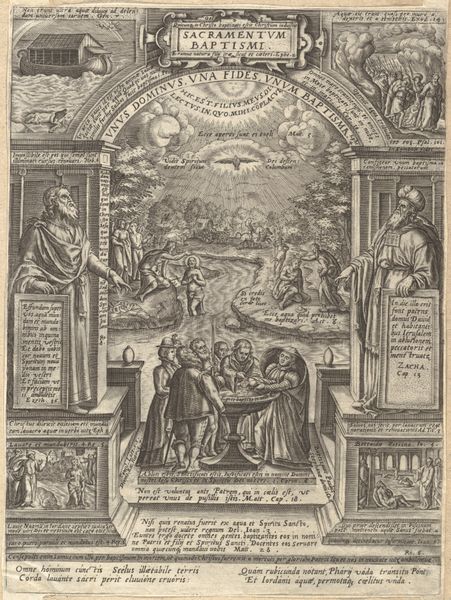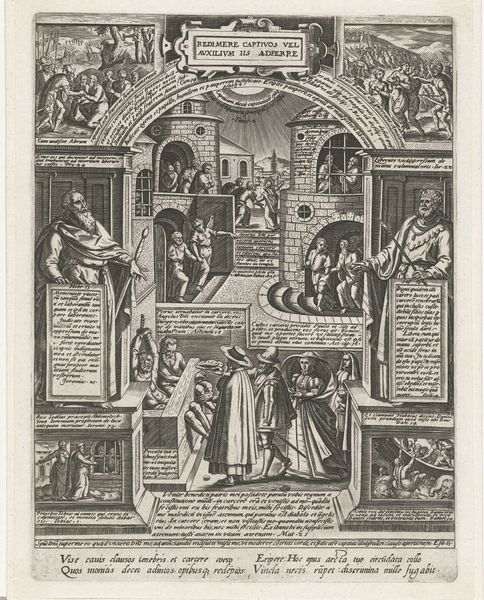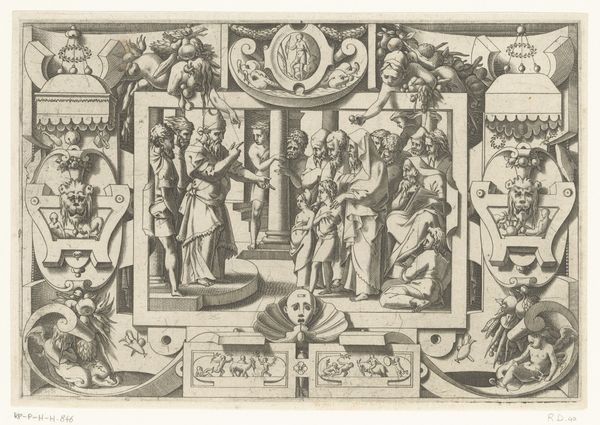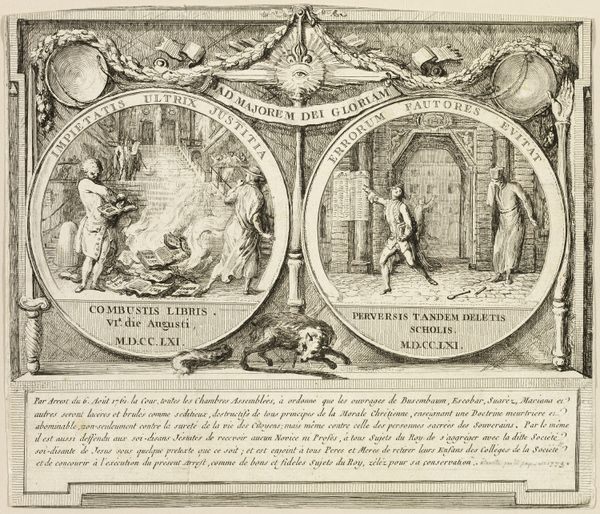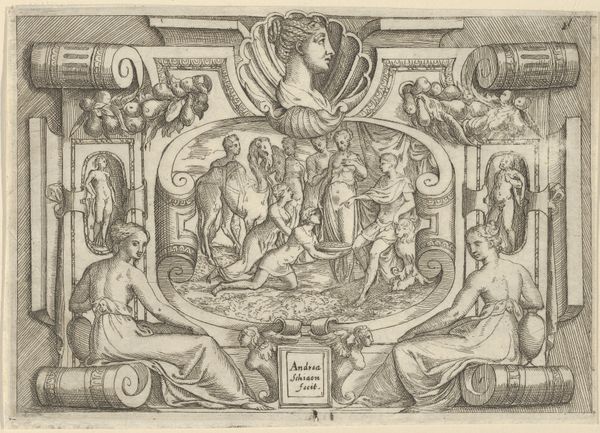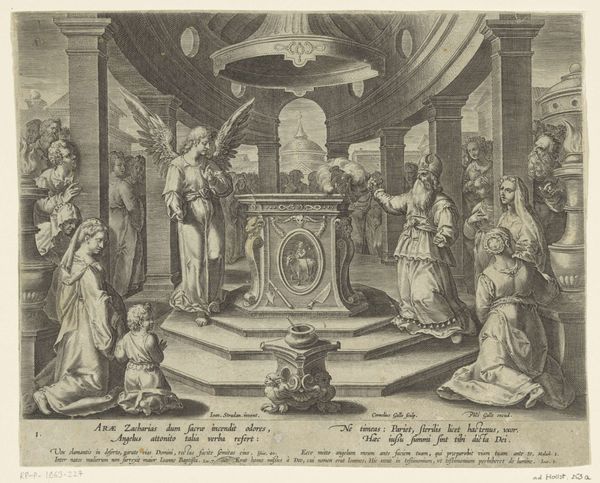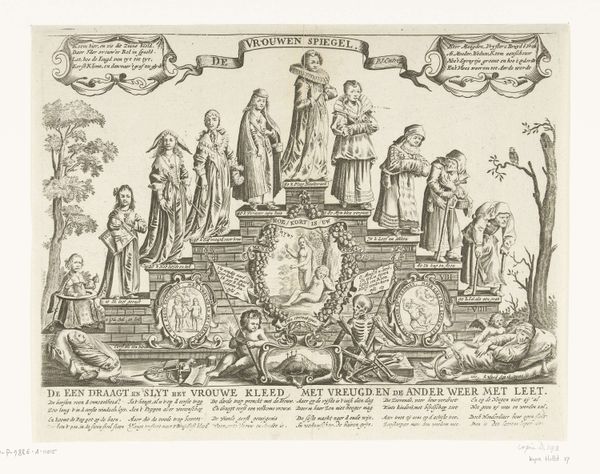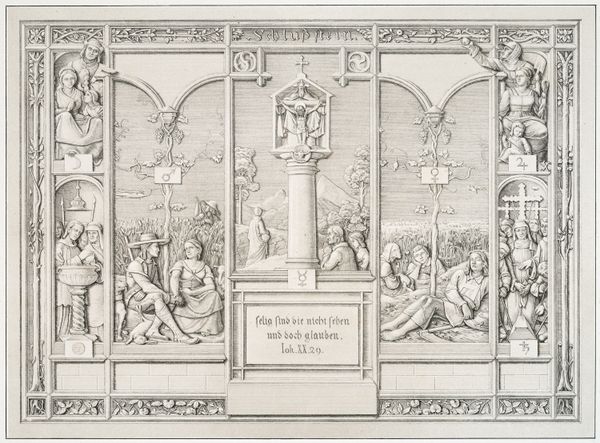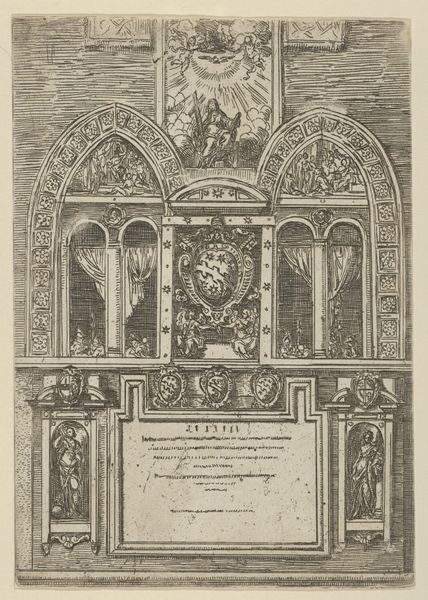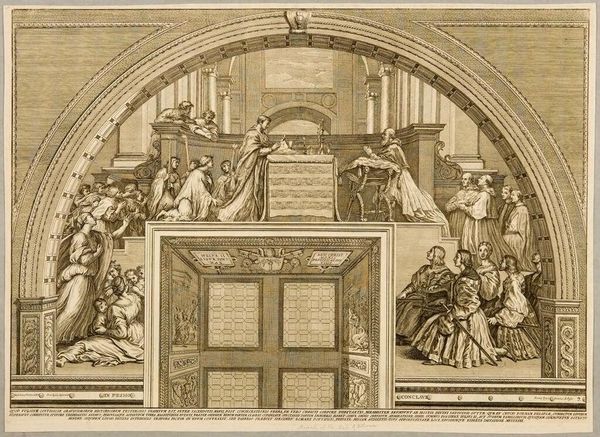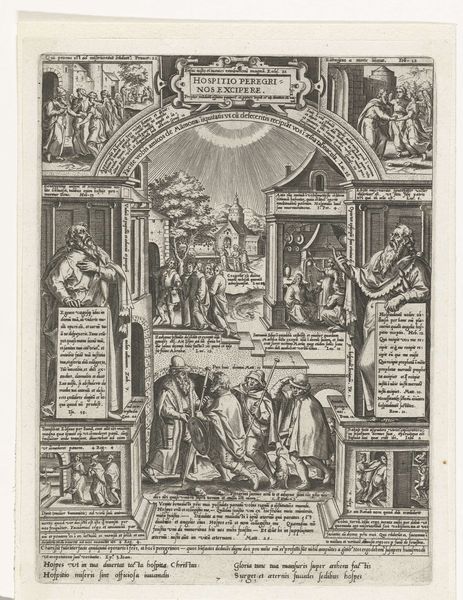
drawing, lithograph, print, paper, ink, engraving
#
drawing
#
allegory
#
lithograph
# print
#
paper
#
ink
#
history-painting
#
engraving
Dimensions: 282 × 356 mm (image); 371 × 529 mm (sheet)
Copyright: Public Domain
Curator: Let's turn our attention to Ferdinand Olivier’s lithograph from 1823, titled "Dedication," housed here at the Art Institute of Chicago. Editor: My initial impression is of a scene suspended between dream and precision. The textures created by the lithographic process give a tangible quality to the ethereal imagery. Curator: Olivier utilized the lithographic printmaking technique, working with ink on paper to create a detailed image. What’s striking is the way he combined the precision of engraving with the tonal range achievable through lithography. The social context of this work lies in its creation during a period of intense religious revival in Germany. Editor: Absolutely. Note how the composition invites the eye to traverse every detail, with figures, script, and landscapes interweaving. The cross sits at the heart of the image and draws immediate focus. It is flanked by angelic figures on a landscape, which serves as the vanishing point, thus centralizing its theological value. The choice of a monochrome palette also encourages formal analysis. Curator: The medium lends itself well to distribution and the reproduction of allegorical images became quite popular. The names integrated into the foliage suggest a commemorative aspect as well, alluding to the practice of honoring historical figures within a family tree. This intertwining of history and nature really embodies Romanticism. Editor: Speaking to the symbolic weight of this history, I wonder about the impact on a 19th-century viewer encountering "Dedication". There’s a potent blend of piety and precision at play. Curator: Precisely, by using printmaking techniques the piece moves outside the elite realm and becomes a reproducible icon. The artist’s intent to imbue the piece with this almost didactic tone seems clear, thus giving way to understanding it within the culture of its era. Editor: Thinking about Olivier's lithograph has encouraged a greater consideration of how the social and spiritual movements influenced aesthetic decisions. Curator: Agreed; for me, the careful craftsmanship invites a greater appreciation of printmaking techniques.
Comments
No comments
Be the first to comment and join the conversation on the ultimate creative platform.
